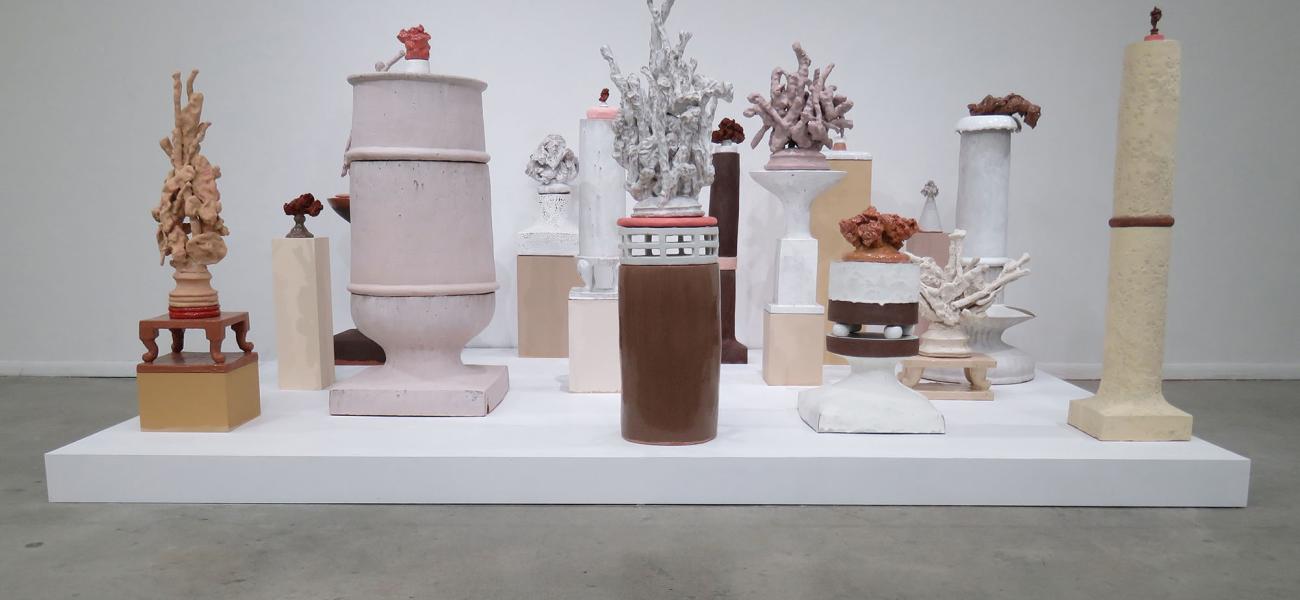In his most recent book, Fewer, Better Things: The Hidden Wisdom of Objects,[1] craft scholar Glenn Adamson addresses ways in which we frame objects. The book’s cover features Pianello (2001), a tempera painting by American artist William Bailey, who is best known for still life compositions of common – often ceramic – objects. Painting from memory, he refers to his subjects as “actors in a repertory company.”[2] Bailey records ever-changing relationships between objects and the roles they play in constructing domestic environments. Remaining within the framework of still life, he generates a wide variety of domestic scenarios.
 Martina Lantin and Zimra Beiner, both professors in the ceramics program at the Alberta University of the Arts in Calgary, Canada, similarly play with the genre of still life, using it to frame ongoing investigations of domesticity. Casting ceramic objects as actors in a repertory company, Lantin and Beiner offer multiple perspectives regarding the place of objects in everyday life. Although Lantin is primarily a potter and Beiner a sculptor, they collaborated in 2018 on a joint exhibition, Form Demands Place, which was re-constituted and exhibited later that year under a new title, A Better Understanding.[3] Reflecting their individual practices, the exhibitions profited from the sort of energy that accompanies successful collaborations.
Martina Lantin and Zimra Beiner, both professors in the ceramics program at the Alberta University of the Arts in Calgary, Canada, similarly play with the genre of still life, using it to frame ongoing investigations of domesticity. Casting ceramic objects as actors in a repertory company, Lantin and Beiner offer multiple perspectives regarding the place of objects in everyday life. Although Lantin is primarily a potter and Beiner a sculptor, they collaborated in 2018 on a joint exhibition, Form Demands Place, which was re-constituted and exhibited later that year under a new title, A Better Understanding.[3] Reflecting their individual practices, the exhibitions profited from the sort of energy that accompanies successful collaborations.
Both installations include intimately-scaled objects, which occupy different points on the spectrum between sculptural and functional, familiar and perplexing. Their scale and form suggest domestic, functional wares. Flower bricks and vases rub shoulders with decorative tiles and mugs, yet their apparent familiarity is challenged by the inclusion of aberrant forms that resemble pieces of modern sculpture, electrical insulators or playful toys. Surface treatment, colour, and scale establish relationships between forms, blurring or doubling individual identities.

